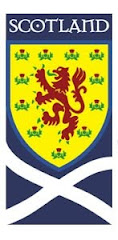Who would've thought a castle was in your own backyard? More like an hour away, but close to home nonetheless.
The clan and I ventured to Ellwood City, PA to Olde Stonewall Castle and Shakespeare's Restaurant and Pub over Valentine's Day weekend. As if this historical author would pass up an opportunity to wander around a castle!
Sitting upon 269 acres and actually known for its golf course, Olde Stonewall was rated as one of the top 50 places to play golf in the USA. For me, the only interest I have in the sport is the miniature kind. I don't think dunking the ball into the treasure chest would quite fit in here.
Imposing wooden doors that are 12-feet high and weigh 800 pounds have matching intertwined gargoyle door handles. Once you enter the fortress, a 6-foot knight-in-shining-armor greets you in the entryway. Envisioning yourself in the 16th century, clouds are depicted upon the ceilings with medieval chandeliers casting their mystical glow. The owner has antiques displayed in corner nooks and along the walls, mostly which are imported from Spain.
Shakespeare's Restaurant and Pub has a delightful medieval theme. The waiters and waitresses dress in peasant tops--although no kilts are donned--to add to the European atmosphere. Hanging in the main dining room, chandeliers were recovered from former churches in the Pittsburgh area and restored. The food is outstanding and the choices vary from sandwiches to prime rib and lobster. The price fits anyone's budget.
The elevator takes you to the second floor which also boasts several antique rugs and medieval weaponry. Period pictures are also displayed in several additional banquet rooms.
Unfortunately, we did not get the chance to roam outdoors due to the weather, but there is a 20-foot oval water fountain and a flower garden in the back of the castle. We will definitely be returning in the summer months to enjoy the outdoors.
When Scotland is so far away, why not enjoy a Sunday drive to a castle that's so close to home?















.jpg)




















.JPG)

.JPG)











.jpg)




